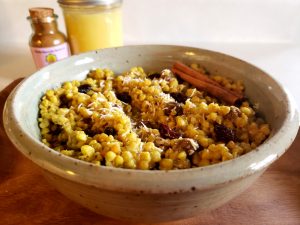 Breakfast is an essential part of our morning routine as it is one of the main building blocks that lays the foundation for our day. A healthy breakfast should be neither too big nor too small in quantity and should be neither too heavy nor too light. Ideally it should contain a substantial dose of lean protein and whole grain fiber to provide us with a sustainable feeling of satiation and energy throughout the morning and into the mid-day. This tri-doshic Buckwheat Breakfast recipe fits all of this criteria, as well as adds a bit of healing power from some of my favorite Ayurvedic herbs and spices including ashwagandha and turmeric.
Breakfast is an essential part of our morning routine as it is one of the main building blocks that lays the foundation for our day. A healthy breakfast should be neither too big nor too small in quantity and should be neither too heavy nor too light. Ideally it should contain a substantial dose of lean protein and whole grain fiber to provide us with a sustainable feeling of satiation and energy throughout the morning and into the mid-day. This tri-doshic Buckwheat Breakfast recipe fits all of this criteria, as well as adds a bit of healing power from some of my favorite Ayurvedic herbs and spices including ashwagandha and turmeric.
Although buckwheat groats are tri-doshic by nature, they are said to be best for Kapha dosha due to their gluten-free, light, and nutrient dense qualities. For these reasons, buckwheat is also a great “grain” (they are actually a starchy seed) option to complement most detox and weight loss programs. Additionally, buckwheat is cooling for Pitta dosha and easy-to-digest for Vata, making them balancing and suitable for all body-types. **See below the recipe for our “Optional Doshic Variations” to help make this recipe even more balancing for your doshic needs!
Buckwheat groats are a great source of insoluble fiber, plant-based protein, iron, antioxidants, and phytonutrients. Some of the main health benefits from consuming buckwheat on a regular basis include its ability to increase overall heart health, decrease blood pressure, lower cholesterol, regulate blood sugar levels, aid in weight loss, promote healthy elimination and prevent certain cancers (i.e. breast, colon, etc). Although buckwheat groats offer us a ton of health benefits on their own, this recipe goes one step further by utilizing some of my favorite Ayurvedic essentials including ashwagandha, turmeric, ginger, cinnamon and ghee.
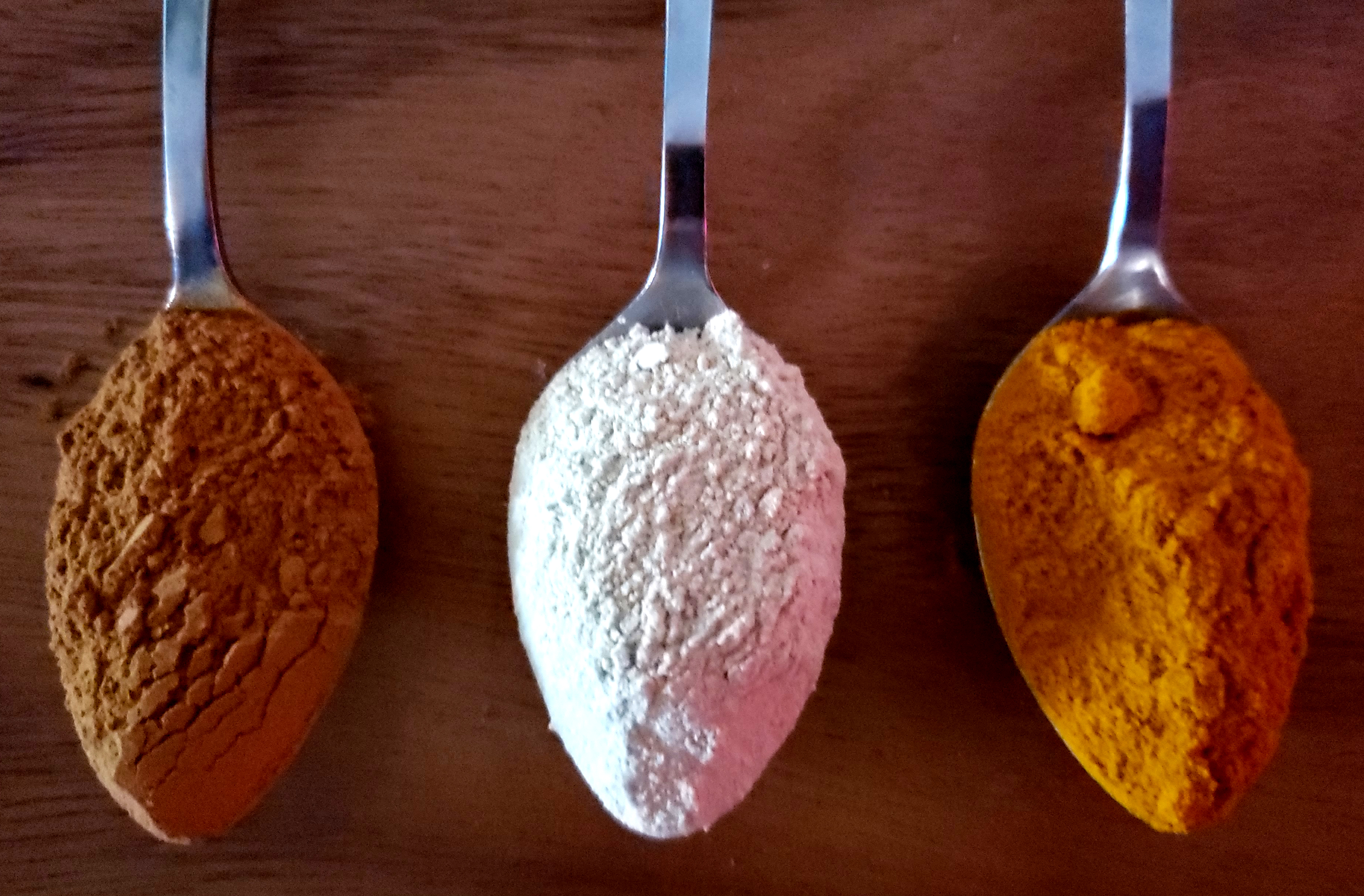
Health Benefits of Ashwagandha
This grounding root is a well known stress-reducing adaptogenic herb that provides us with strength, energy, immunity and overall vitality. It is a powerful rejuvenative, especially in regards to the reproductive system (increases fertility and libido), the nervous system and our muscles (great for taking post-workout!).
Click here to discover more health benefits and uses of Ashwagandha.
Health Benefits of Turmeric
This universal medicine is an Ayurvedic essential in any kitchen space! Turmeric is very versatile in both its uses as well as its healing properties. Some of the most notable include its ability to increase the digestive fire, cleanse the blood and liver, reduce inflammation, alleviate arthritic symptoms, kill off unwanted pathogens, balance the blood sugar, prevent Alzheimer’s and beautify the complexion, making this an excellent addition for your morning meal!
Click here to discover more health benefits and uses of Turmeric.
Health Benefits of Ginger
Ginger is a powerful, spicy root that packs a powerful punch in both taste and health benefits. It is most well known for its ability to increase the digestive fire (the best!) and reduce symptoms of indigestion (gas, bloating, nausea, etc). However, this herb is equally as beneficial for increasing the circulation, flushing out toxins, reducing inflammation, alleviating cough and congestion and awakening the mind.
Click here to discover more health benefits and uses of Ginger.
Health Benefits of Cinnamon
Although cinnamon is generally thought of mainly as a culinary spice, this tasty bark possesses a long list of health benefits as well. These include its ability to increase the digestive fire, reduce gas, bloating and cramping; burn toxins, increase circulation, relieve arthritis, treat Candida, lower blood sugar levels and stimulate the mind.
Click here to discover more health benefits and uses of Cinnamon.
Health Benefits of Ghee
No Ayurvedic recipe is quite complete without a little ghee! The ghee in this recipe is used to add a bit of healthy fat, aiding in digestion and lubricating the tissues. Ghee is commonly used to increased Ojas (vitality, immunity), boost energy levels and of course add a pleasant taste to the food.
Click here to discover more health benefits and uses of Ghee.
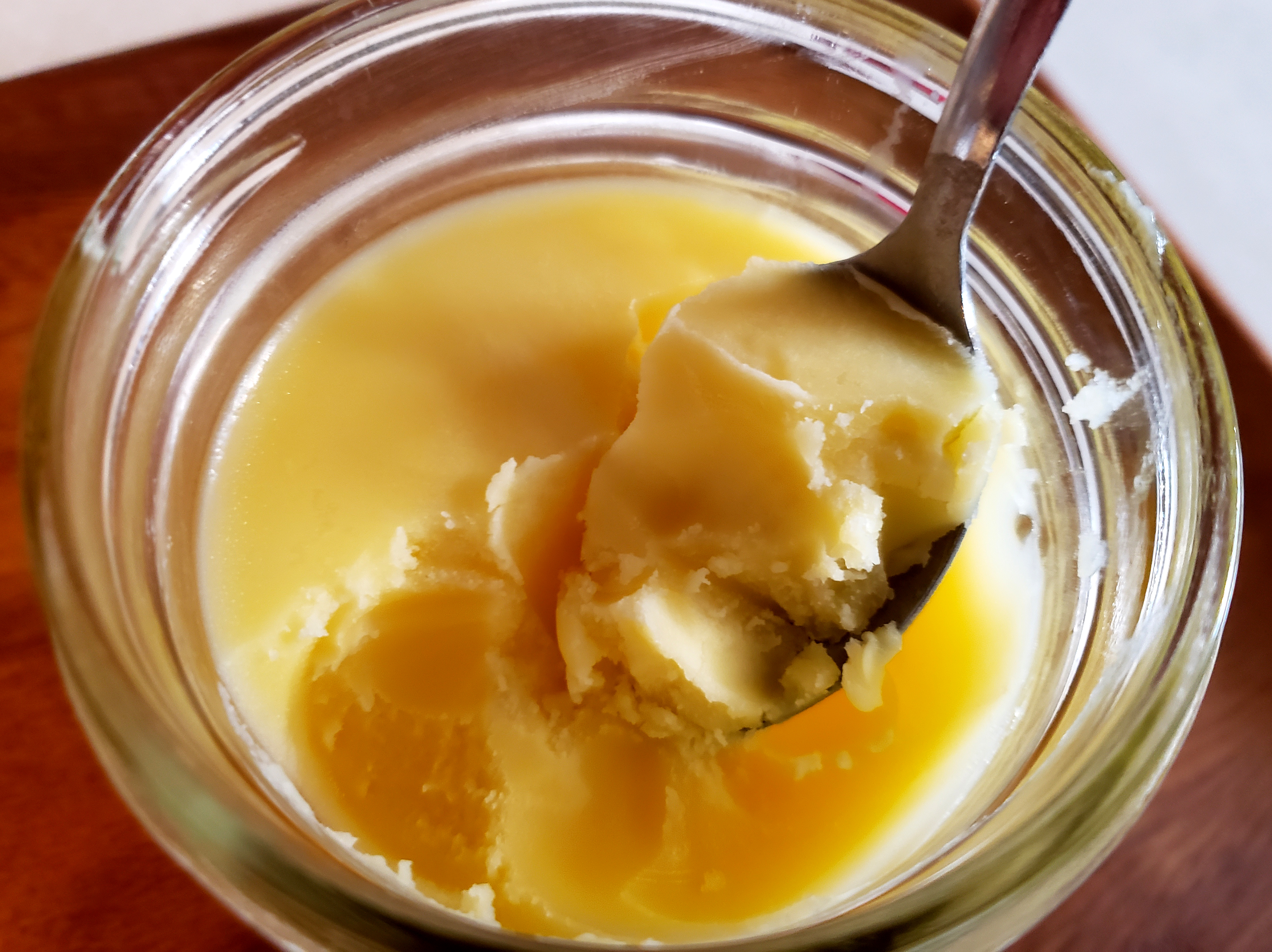
Golden Energy Buckwheat Breakfast Recipe
Click here for a printable copy of this recipe.
- Doshic effect: Tri-doshic, Vata ↓, Pitta ↓, Kapha ↓
- Serving: 2
- Time: 20-25 minutes
- Gluten Free, Vegetarian
Materials
- Small to medium pan
- Measuring spoons and cups
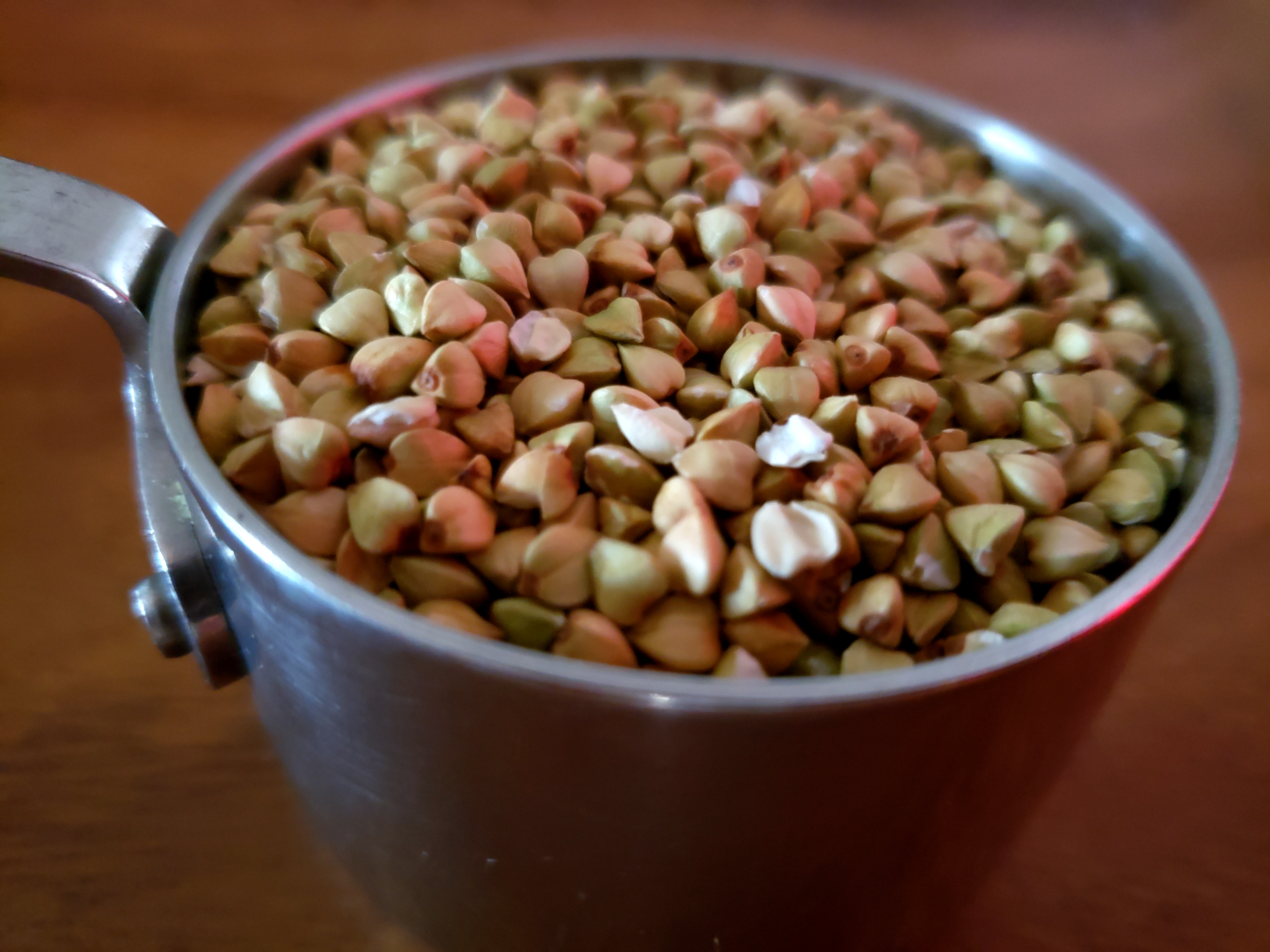
Click here for a printable copy of this recipe.
Directions
- 2 cups water
- 1 cup raw buckwheat groats
- Pinch salt
- 1 cup unsweetened almond milk (page xx)
- 1/2 teaspoon turmeric*
- 1 teaspoon cinnamon
- 1 teaspoon ashwagandha* (optional)
- 1/4 teaspoon cardamom*
- 1/2 teaspoon ginger*
- 30 raisins
- 2 teaspoons shredded coconut
- 1 teaspoon ghee
- Splash almond milk
- 2 to 4 teaspoons honey
- Cinnamon, for garnish
Instructions
1. Heat water in a small sauce pan to bring to a boil. Once boiling, reduce the heat to low and stir in buckwheat groats and a pinch of salt.
2. Cover the pan, leaving a slight crack to avoid overflow, and cook here for 15 minutes or until the buckwheat has plumped up and the liquid is almost gone. Stir every 5 minutes.
3. Stir in almond milk, turmeric, cinnamon, ashwagandha (if used), cardamom, ginger, raisins, coconut, and ghee. Stirring frequently, cook here covered for an additional 2 to 3 minutes or until the buckwheat obtains the desired softness.
4. Serve into two bowls. Top each bowl with a splash of almond milk, and a sprinkle of cinnamon. Once the groats have cooled slightly stir in 1 to 2 teaspoons of honey per bowl.
5. Enjoy this dish regularly as a light and energizing breakfast. It is balancing for all dosha types and can be eaten all year round.
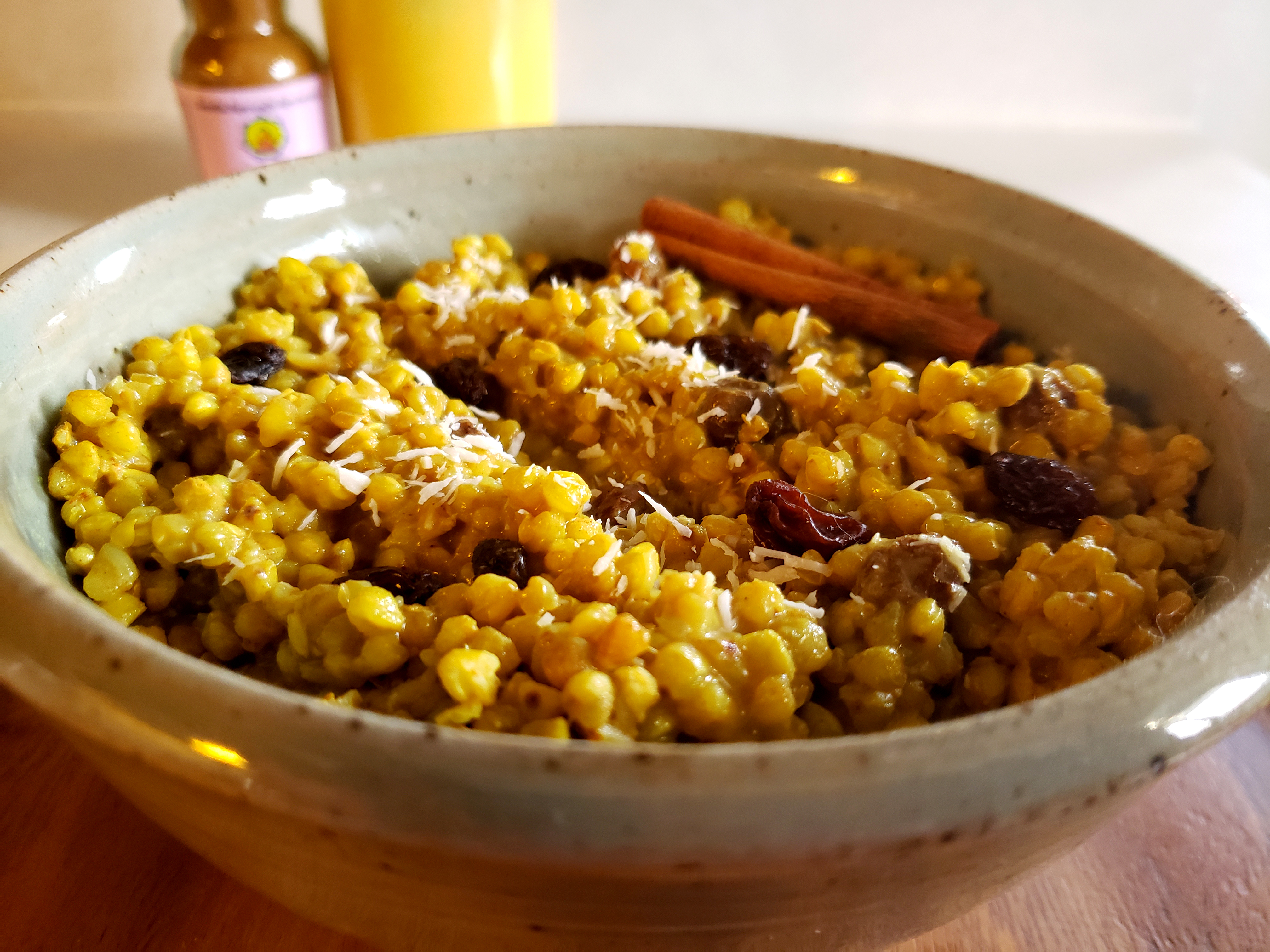
Optional Doshic Variations
Vata:
Due to the light nature of the buckwheat, Vata types may need to blend 1/2 cup of steel cut oats with 1/2 cup of buckwheat (instead of the full cup of buckwheat alone). This will add a bit more heartiness which will help to ground Vata for the morning. Similarly extra ghee and shredded coconut can be added in for their Vata-reducing benefits. Otherwise this is a great easy-to-digest breakfast for Vata to enjoy all year round!
Pitta:
This recipe is overall Pitta balancing. The ashwagandha and the honey may be too heating for some Pitta types in which the same amount of shatavari powder and maple syrup can be used as a replacement respectively.
Kapha:
This recipe is an amazing breakfast option for Kapha types and during Kapha imbalances such as sluggish digestion, slow metabolism, diabetes, obesity (or general weight issues), congestion, high blood pressure, high cholesterol and heart issues. For times of severe Kapha imbalance the ghee, raisins, salt and shredded coconut should be omitted (or reduced) and the almond milk should be used sparingly (replace with extra water if needed). As always, Kapha will benefit by adding a generous amount of spices to help aid in digestion and increase the metabolism.

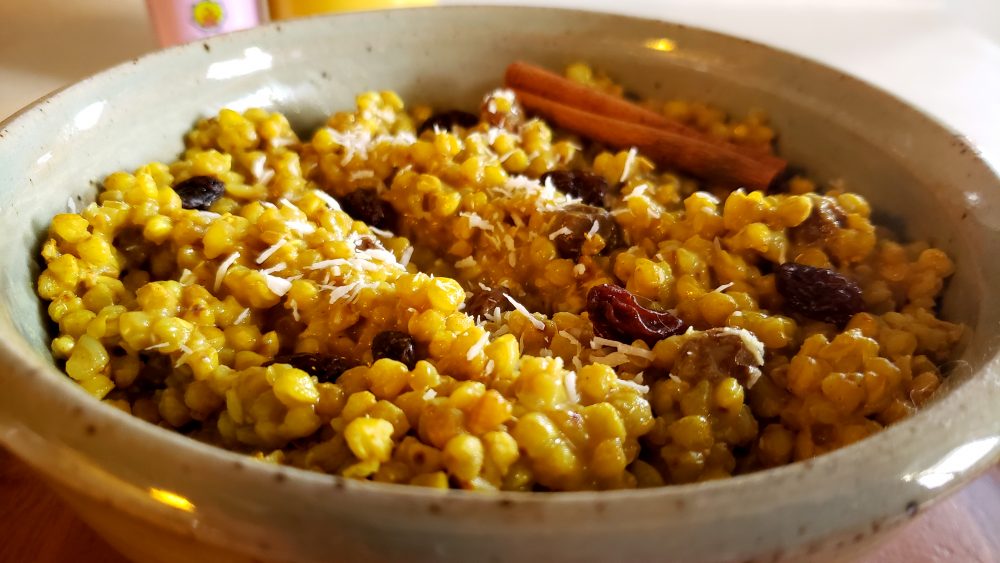

Thank you for this recipe! Is there any reason that organic dairy whole milk shouldn’t be used?
Hi Jamie,
Thank you for your question! Whole milk can definitely be used in place of the almond or hemp milk. This is just one method for making the buckwheat groats to keep it more Kapha-reducing (being the season and all). However, if you are of a Vata or Pitta nature and can digest milk without concern, then whole milk will be an equally healthy and delicious option for you! Thanks again for your question:)
Namaste,
Danielle
I am allergic to dairy can I substitute the ghee for coconut oil?
Yes! Coconut oil will be a healthy and delicious replacement option for the ghee. I switch off sometimes myself:) Thanks for writing in! I hope you enjoy!
Namaste,
Danielle
Hi I love buckwheat but everywhere I have read it’s heating/bad for pitta Dosha but it feels great to me? Please share what you know about these conflicting statements, thank you!
Hi Alex,
This is a great question! You are correct that buckwheat is considered “heating”, but in reality, it would be more accurate to call it “warming”.
There is a spectrum to what is heating and cooling and it is important to remember this. Many foods are listed under the heating category, but they will not all be equally as heating as another. For example, consider buckwheat or millet when compared with chili peppers, black pepper, or tomato sauce. They can all be included as heating, but I think you can guess which ones will be on the more extreme side.
Finally, if you feel like your body is giving you a clear message that something is good for you, this will be the ultimate gauge for deciding if a food is right for you or not.
I hope this helps to bring a bit of clarity around this issue. Please let me know if you have any further questions and I will be happy to help!
Be well:)
Namaste,
Danielle
Terrific recipe. I’ve been meaning to try this recipe during my cleanse rejuvination phase and finally did. Tasty, balancing, and easy. Plus the portion sizes are ample–like a real portion as opposed to the thimble sized portions of so many supposedly healthy recipes. Thank you!
Hi Mary,
I am so happy you enjoyed this recipe! This is a great breakfast recipe for rejuvenation without being too heavy. A hearty breakfast rich in fiber and protein is extremely important for starting the day with the proper kind of fuel. I will even add in an egg (cooked in at the end) or sprinkle of some freshly ground flax and hemp seeds if I feel I need more protein.
Thanks for sharing your experience! Sending you much love from CO:)
Many blessings,
Danielle
I’m curious as I’m trying to understand improper food combinations. Does the use of raisins in this recipe create any problems regarding food combinations? Are raisins not a problem to combine with other foods?
Hi Chris,
Thank you for writing in with this wonderful question! If you are confused with the raisins being in this recipe, that is great. You should be!
The answer is that there are (almost) always exceptions to every rule. Raisins are a fruit, but from my studies with Dr Vasant Lad and Alakananda Ma, I was taught that raisins and dates are excluded from the “no” list when combining fruit with other foods. I believe it is because the Vipak is sweet rather than sour, but that is just my guess. It could also be one of these phenomena known as Prabhav, or an unexplained effect – it is simply so. Of course, if you have a sensitive digestion and the raisins still seem to cause disturbance, then leave them out!
I hope this helps clear up any confusion!
Take good care and be well:)
Namaste,
Danielle
If I have a head cold with clear mucous in one nostril and a slight yellow in the other which is usually blocked. Are these recipes appropriate? I am very Vata usually but now Vata Kapha with the congestion.
Thank you,
Marcea
Hi Marcea,
Thank you for writing in! I hope your congestion is clearing, but if not, this buckwheat is a great breakfast grain option for Kapha as it is lighter and less slimy than oats. This recipe is tridoshic overall, meaning it is suitable for all body types. While there is congestion or high Kapha in general, I would avoid adding any dairy products to the porridge and stick with homemade nut or seed milk.
Let me know if you have any further questions! EnJOY:)
Namaste,
Danielle
Hello Danielle,
What’s the approximate size of the raisins you use? If I count 30 of them it’s a (flat) table spoon full. I’d love to add more… But is that ok with my dosha’s?
And is it okay to add them at the same time ass the buckwheat? I love them best when swollen and the taste is all the way through.
I have a KP dosha (both in excess at the moment).
Greetings, sietske
Hi Sietske,
Thank you for writing in! Raisins are suitable for Pitta, but they tend to increase Kapha, especially if your Kapha is already high. Therefore, I would avoid increasing the raisins at this time as they are fairly concentrated in sugar.
If you prefer adding them while cooking, this is totally fine and will even make them slightly more digestible. I usually add them at the end since I found cooking them removes some of their sweetness, but I agree the plumpness of a cooked raisin is delish!
I hope you enjoy the recipe:)
Many blessings,
Danielle